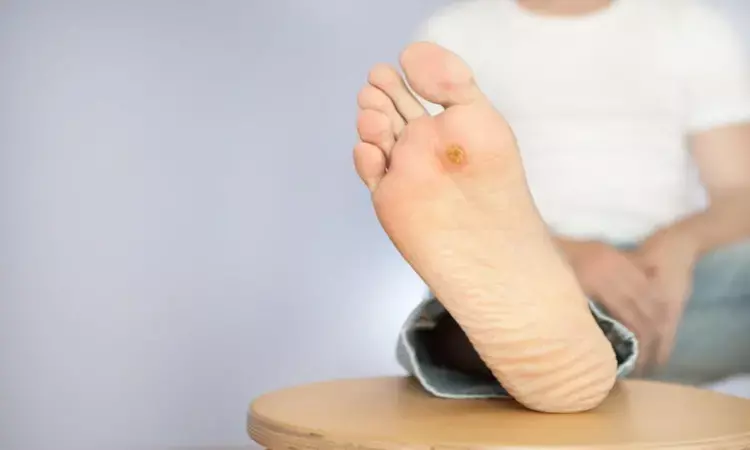- Home
- Medical news & Guidelines
- Anesthesiology
- Cardiology and CTVS
- Critical Care
- Dentistry
- Dermatology
- Diabetes and Endocrinology
- ENT
- Gastroenterology
- Medicine
- Nephrology
- Neurology
- Obstretics-Gynaecology
- Oncology
- Ophthalmology
- Orthopaedics
- Pediatrics-Neonatology
- Psychiatry
- Pulmonology
- Radiology
- Surgery
- Urology
- Laboratory Medicine
- Diet
- Nursing
- Paramedical
- Physiotherapy
- Health news
- Fact Check
- Bone Health Fact Check
- Brain Health Fact Check
- Cancer Related Fact Check
- Child Care Fact Check
- Dental and oral health fact check
- Diabetes and metabolic health fact check
- Diet and Nutrition Fact Check
- Eye and ENT Care Fact Check
- Fitness fact check
- Gut health fact check
- Heart health fact check
- Kidney health fact check
- Medical education fact check
- Men's health fact check
- Respiratory fact check
- Skin and hair care fact check
- Vaccine and Immunization fact check
- Women's health fact check
- AYUSH
- State News
- Andaman and Nicobar Islands
- Andhra Pradesh
- Arunachal Pradesh
- Assam
- Bihar
- Chandigarh
- Chattisgarh
- Dadra and Nagar Haveli
- Daman and Diu
- Delhi
- Goa
- Gujarat
- Haryana
- Himachal Pradesh
- Jammu & Kashmir
- Jharkhand
- Karnataka
- Kerala
- Ladakh
- Lakshadweep
- Madhya Pradesh
- Maharashtra
- Manipur
- Meghalaya
- Mizoram
- Nagaland
- Odisha
- Puducherry
- Punjab
- Rajasthan
- Sikkim
- Tamil Nadu
- Telangana
- Tripura
- Uttar Pradesh
- Uttrakhand
- West Bengal
- Medical Education
- Industry
Diabetic foot disease in patients with end-stage renal disease: An emerging threat?

Taiwan: Patients with diabetes and end-stage renal disease (ESRD) should be educated on the prevention of diabetic foot disease, and if peripheral arterial disease (PAD) is complicated, the researchers suggest that the performance of endovascular treatment should not be hesitated, according to a recent study.
"Over the years, the annual prevalence of patients with ESRD has increased 3.9-fold; they now constitute more than 30% of annual major-lower-extremity amputations (LEAs) of subjects with ESRD on diabetic foot diseases," Cheng-Wei Lin and colleagues from Taiwan wrote in their study published in Diabetes Research and Clinical Practice. "An interdisciplinary team approach and aggressive endovascular treatments (EVTs) might reduce major LEAs in these patients."
The study was conducted to disclose the prevalence, foot characteristics, demographic, and management and lower-extremity amputations of patients with end-stage renal disease on diabetic foot diseases.
For this purpose, the research team derived data from the Taiwan National Health Insurance Research Database from 2004 to 2017. Analysis of the clinical characteristics was done between subjects with and without ESRD. Diabetic foot ulcers were infections, ulcers, or severe peripheral arterial diseases in type 2 diabetes patients.
The study demonstrated the following findings:
· ESRD patients have increased impacts on the DFD population from annual prevalence (2.7% to 10.42%) or proportional representation in LEAs (7.91% to 26.37%) over 14 years.
· The annual trends for significant LEAs rates have decreased in patients with and without the end-stage renal disease (13.67% to 5.82% and 3.48% to 1.47%).
· The concurrent rise of endovascular treatments (EVTs) (7.09% to 29.41%) was associated with decreased prominent LEAs in patients with ESRD.
PAD was the significant difference in foot presentation versus those without ESRD. The increase in endovascular treatments was linked with reduced limb loss rates.
"Patients with diabetes and concomitant ESRD should be educated about DFD prevention, and the performance of endovascular treatments should not be hesitated if PAD is complicated," the researchers concluded.
Reference:
"Diabetic Foot Disease in Subjects with End-stage Renal Disease: A Nationwide Study over 14 Years Highlighting an Emerging Threat" was published in Diabetes Research and Clinical Practice.
DOI: https://doi.org/10.1016/j.diabres.2022.110134
Dr Kamal Kant Kohli-MBBS, DTCD- a chest specialist with more than 30 years of practice and a flair for writing clinical articles, Dr Kamal Kant Kohli joined Medical Dialogues as a Chief Editor of Medical News. Besides writing articles, as an editor, he proofreads and verifies all the medical content published on Medical Dialogues including those coming from journals, studies,medical conferences,guidelines etc. Email: drkohli@medicaldialogues.in. Contact no. 011-43720751


